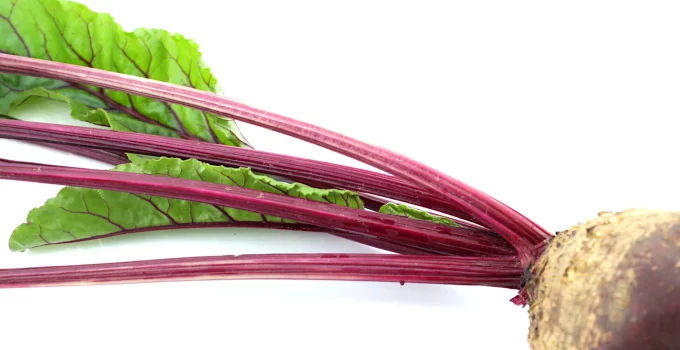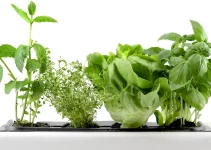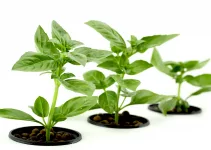Before going into the conditions and the systems and everything else we need to include in this guide on how to grow hydroponic beets, we must discuss a few crucial aspects. These aspects are related to the fact that these vegetables are traditionally grown in the ground. Let’s see why that matters.
Table of Contents
How to Grow Hydroponic Beets: How Hard Is It?
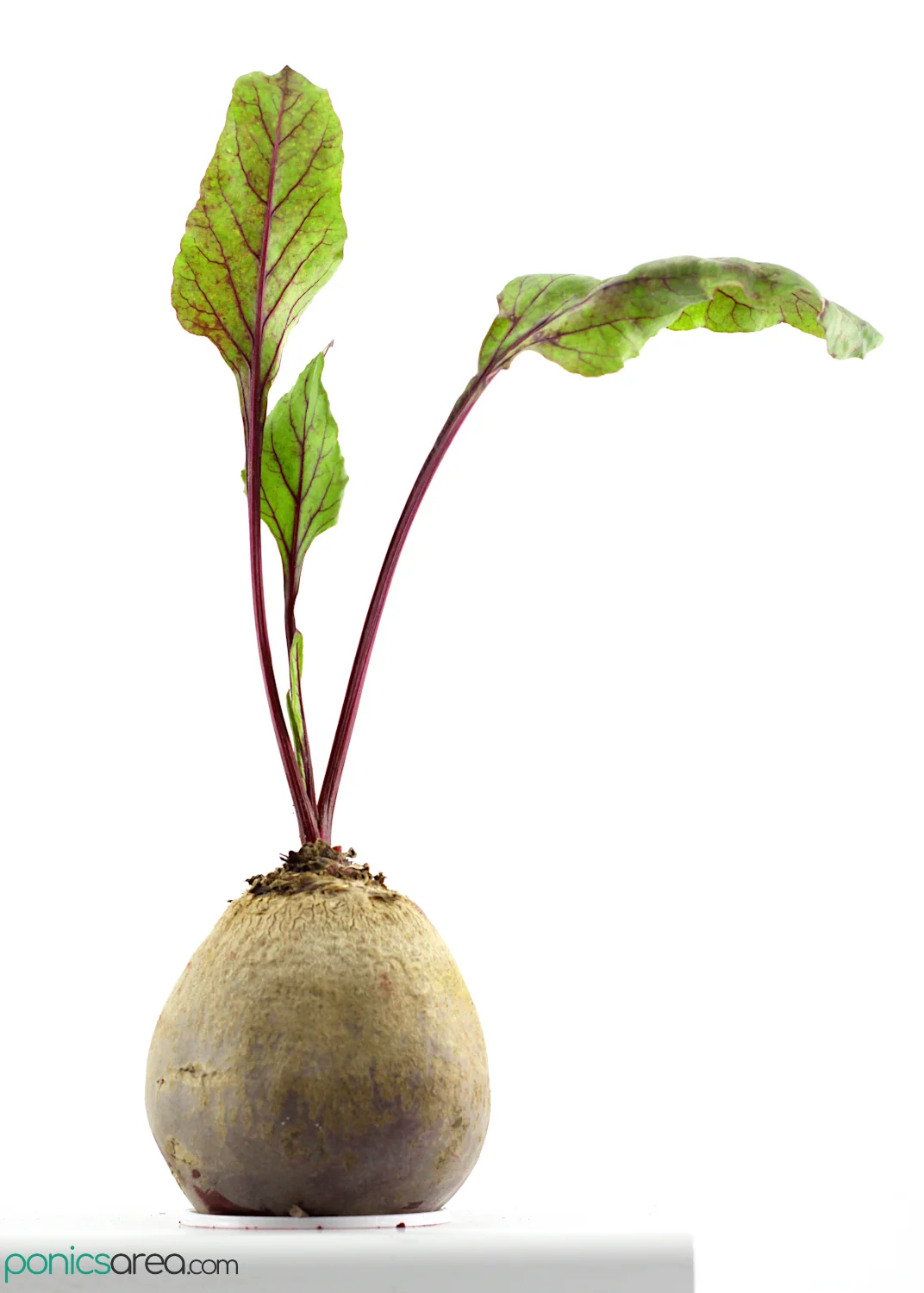
Let me just tell you right from the start: when it comes to knowing how to grow hydroponic beets, you’ll discover that it might not go as easily as it goes for other vegetables.
Why is that?
There’s one simple reason for that: these are vegetables that grow in the ground. Whenever it comes to vegetables that grow in the ground, that form their fruit and grow it until maturity under the soil, things get a bit complicated when it comes to growing them in hydroponic systems.
However,
If you have grown hydroponic potatoes or even onions hydroponically, then you are fully prepared and you don’t need to know that much about how to grow hydroponic beets. You’re pretty much all set.
Actually, from these three, I would say that growing hydroponic beets could be the easiest.
Those who have absolutely no experience with hydroponics, should really just start with leafy greens and herbs and then gradually move up to cucumbers and the like. Only after all that, they might consider bringing up crops that grow in the ground.
Also, call them beets or beetroots, they’re the same.
Hydroponic Conditions for Beets
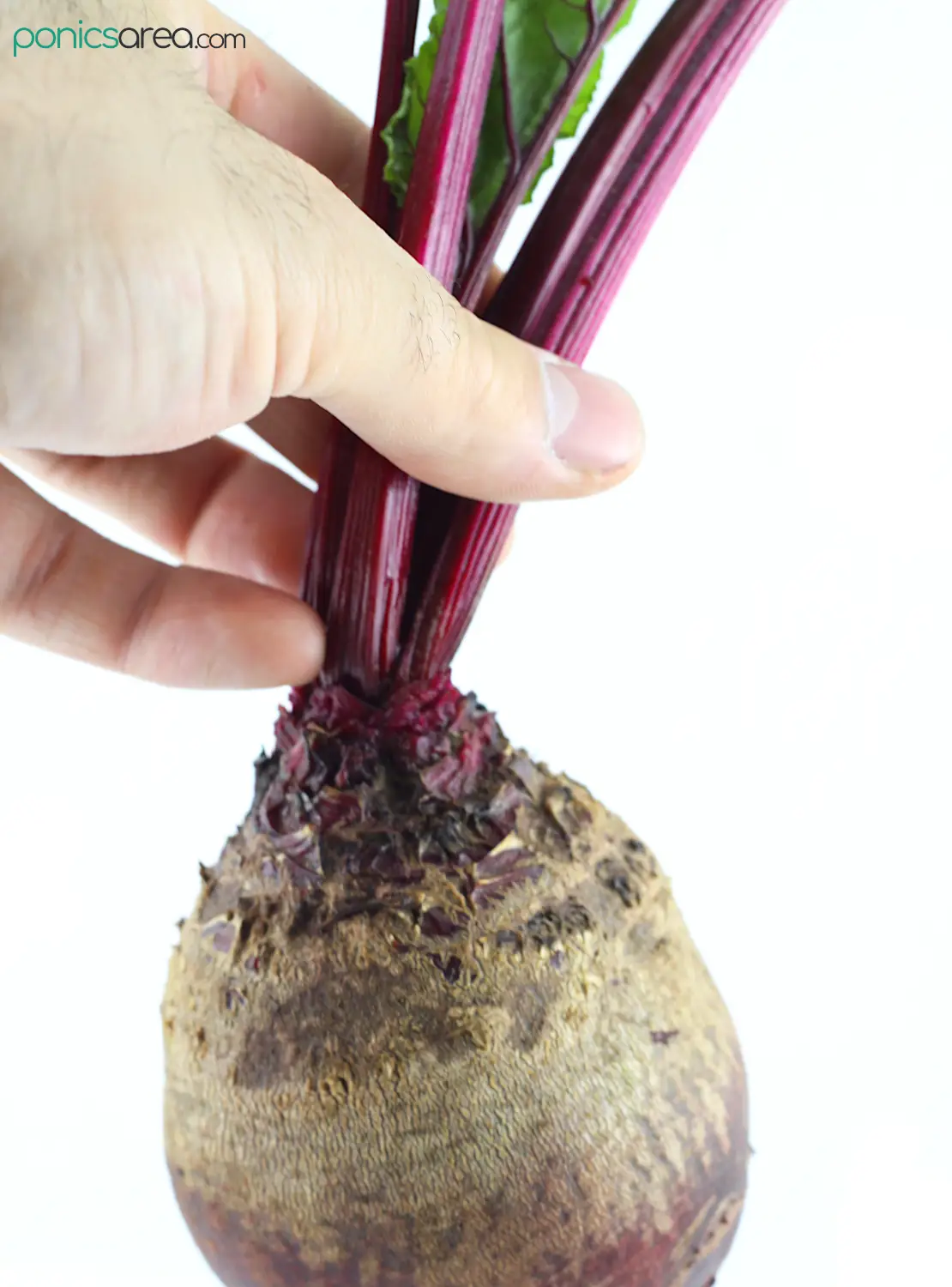
The actual conditions to grow hydroponic beets are not the main concern when it comes to this type of crop. In this regard, they’re not demanding.
1. Growing medium
The idea is that if you want a good yield and you want your beets to develop big roots, then you need to focus on your growing medium first.
I’m not actually referring to which particular growth medium you should be using because that depends from system to system. Check out my post on the best growing medium for hydroponics if you want to know which are my recommendations for each system.
What I’m talking about is that you need a system that will allow you to house a grow medium with adequate length and generous profundity.
One beet plant grows only one root so, you won’t need as much space and depth as one single potato plant requires but you still need some.
The root will also be harvested when it reaches the size of a golf ball. That gives us some flexibility in regard to the depth of the soilless medium.
The general guidelines involve a 4 by 6 medium: 4 inches diameter and 6 inches depth.
I’ll touch more on that below, when talking about the best systems to grow hydroponic beets and which varieties work best.
Where to Buy?
Check Price and User Reviews Here
2. If You Want to Grow Hydroponic Beets in 3-Inch Net Pots
Then you need to focus on mini varieties: little ball and little mini ball.
The beet roots for these two mini varieties only grow the size of a silver dollar at maturity.
Propagation is done from seeds in rockwool cubes or other foam materials.
Where to Buy?
Check Price and User Reviews Here
3. PH & EC
You can keep the general hydroponic pH range between 5.5 and 6.5. Or, if you want more specific levels, aim for 6.0 to 6.5.
The EC should be between 2.0 and 3.5 – that’s the range for fruiting crops.
4. Temperature
For some, the good news when it comes to knowing how to grow hydroponic beets will be that is a cool season crop.
You don’t need to establish hot temperatures for them. They are considered semi-hardy vegetables that can even withstand light frost.
They thrive in temperatures under 70 degrees Fahrenheit (21 degrees Celsius).
If you want to grow them indoors, a garage can be the perfect place to set-up your system.
However, if you’re growing them outdoors, you should make sure to begin germination in early spring so that they mature before the summer heat hits.
Hot temperatures can make them bolt, just like it happens with cilantro (prematurely flower and seed).
5. Nutrient solution
To make things a lot easier, you can buy a general hydroponic nutrient solution.
On the other hand, it is cheaper to make your own from NPK fertilizer with macro-nutrients, calcium nitrate, and epsom salt (magnesium sulfate).
Where to Buy?
Check Price and User Reviews Here
6. Lighting
If you’re growing indoors, 14 hours under grow lights would be great.
Where to Buy?
Check Price and User Reviews Here
7. Germination
Germinate beet seeds in rockwool cubes. It will take about 5 to 8 days until seedlings appear.
You can transplant them into the system together with the cubes.
8. Spacing
When the seedlings are transplanted, they need to be nicely spaced out to allow the roots to grow.
Just take into consideration that the roots for the normal varieties can easily grow to 2 inches in diameter and space them according to that.
As a recommendation, you should transplant the seedlings into a 4 by 6 growing medium: 4 inches in diameter and at least 6 inches deep.
When grown in the ground, the beet seeds are planted directly in the soil 3/4 inches deep and 1 inch apart but that’s because the seedlings are later on thinned by hand to 1 to 3 inches apart.
If they’re overcrowded, they will be kept from developing roots.
Beets Varieties
I recommend going for the hybrid varieties because they’re disease resistant:
- avenger
- big red
- gladiator
- pacemaker
- red ace
- warrior
Those are some really fierce names. It still doesn’t make me love beets like the rest of my family does.
Harvesting
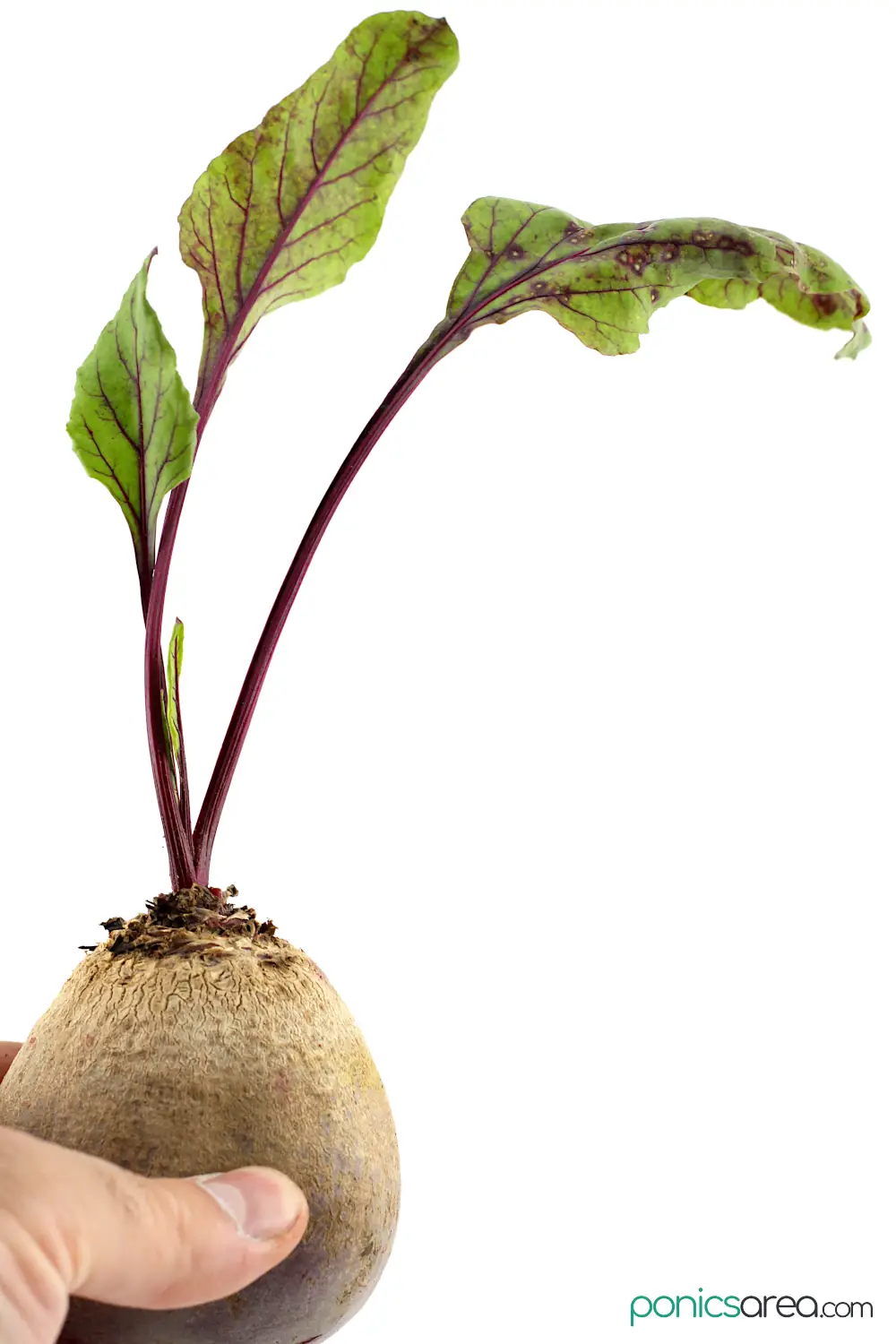
You can harvest them when you feel like they have the desired size.
Usually, harvesting beets takes place 60 to 90 days after planting. You can start harvesting when the root is the size of a golf ball.
The root size can depend on which variety you’re growing. On average, the root will reach 1 to 2 inches in diameter.
It takes about 60 days for beets to reach 1.5 inches in diameter. This is a great size for any cooking you want to do.
They can further grow to reach 3 inches. However, bigger doesn’t always mean better. Roots larger than 3 inches can be tougher and more fibrous.
Hydroponic Systems for Growing Beets
When it comes to learning how to grow hydroponic beets, I must tell you that the best system for all kinds of crops remains the drip hydroponic system.
You can read everything about it in my guide on the drip hydroponic system, which focuses on the different containers and grow beds/buckets that you can use.
It is also one of the hardest to build at home.
If you want a simple setup for growing hydroponic vegetables of all kinds, then you should build a 5-gallon bucket DWC (deep water culture) system.
You can link as many buckets as you want so, you can expand the size of your crops.
Where to Buy?
Check Price and User Reviews Here
There are a lot of tutorials on YouTube, like this one, that show you how to build one.
Since beets need space to grow their roots, you should be using 6-inch net pots.
Other options are the ebb and flow. Aquaponics works well, too, if you have it set-up with a nicely sized grow bed.
Can You Grow Hydroponic Beets in AeroGarden?
First of all, if you own an indoor garden hydroponic kit from AeroGarden you already know that they have quite a generous number of seed pod kits.
They have seed pot kits for:
- a few varieties of lettuce
- a large variety of herbs
- Japanese greens
- tomatoes
- a variety of peppers (chili, jalapeno and capsicum)
- beet greens – these are actually the replacement for beets (you’ll grow deep red leaves but there won’t be any roots)
- Swiss chard – this is another replacement for how to grow hydroponic beets in an AeroGarden or any other indoor garden kit
- spicy microgreens and superfood microgreens
- fairy tale eggplant
- and a few for flowers
When it comes to plants that grow beneath the ground (carrots and beets), AeroGarden mentions that you can start them in the system but they need to be transplanted outdoors in the soil after sprouting.
Where to Buy?
Check Price and User Reviews Here
Swiss chard vs beets
Let’s talk about this comparison because if you have a small indoor garden, even from manufacturers like iDoo or Ezorkas or other more affordable models, you can’t grow beets hydroponically.
You can grow beet greens if you buy the seed pod kit.
Or go for chard. They’re both great replacements.
If you don’t want to buy the Swiss chard seed pod kit from AeroGarden, you just need to buy the seeds and the grow sponges that will fit your model.
Then, use your indoor hydroponic system to grow Swiss chard. That’s my recommendation to the question how to grow hydroponic beets indoors in a very small hydroponic kit.
But what is it about Swiss chard that works are a replacement for beets?
Because chard is closely related to beets, they both belong to the same species. Like this website tells us, a chard is a beet that has been bred to have fat, juice stems and big leaves.
So, there will no roots.
But there will be big leaves and stems that are good and very nutritious. Plus, they can be used for a multitude of recipes from salads to anything that requires cooked greens to soups to stir fry. It’s versatile.
In the end, knowing how to grow hydroponic beets is not that hard as long as you have the right system but, as you saw, there are alternatives for smaller indoor kits, too.

